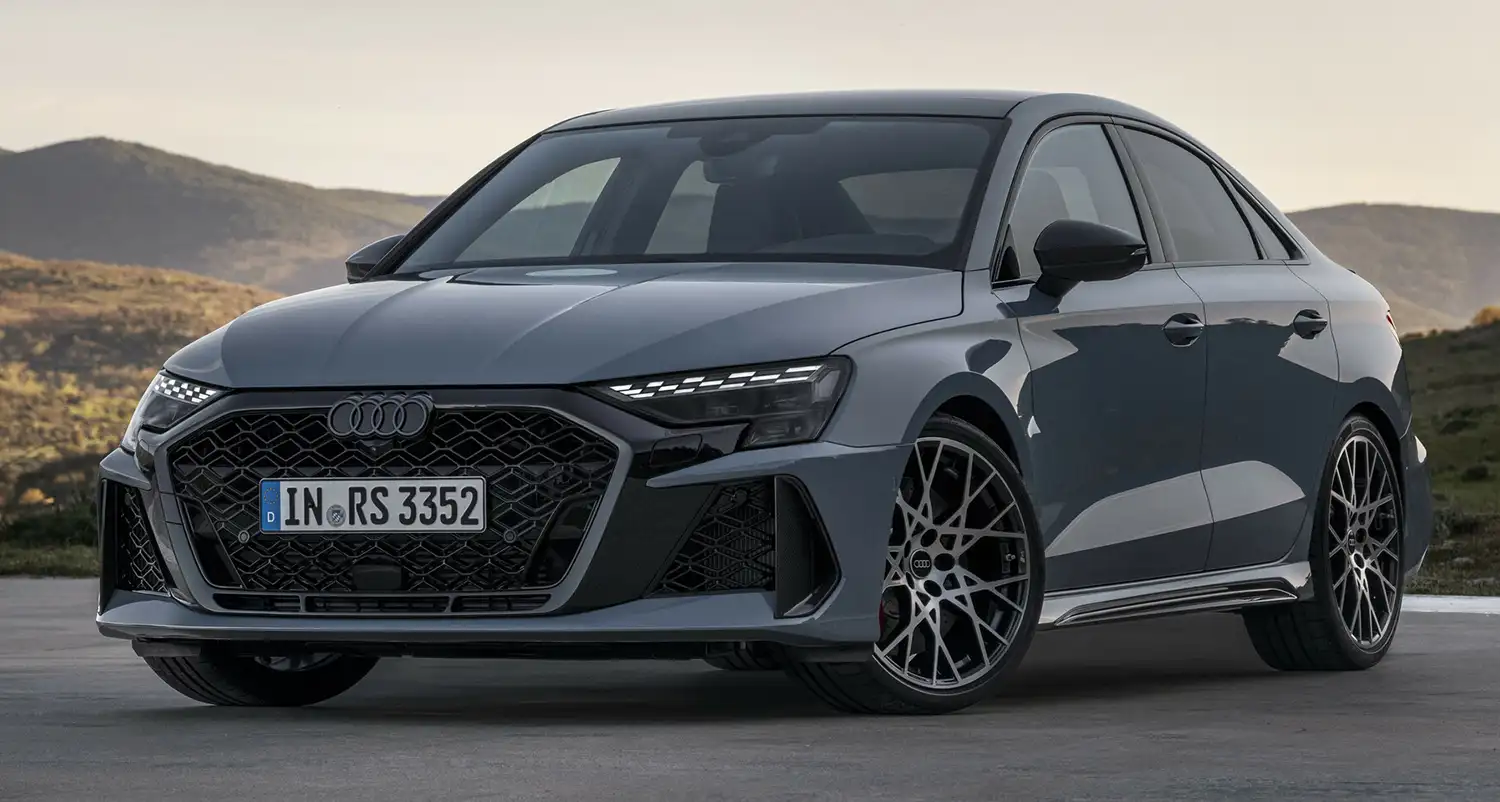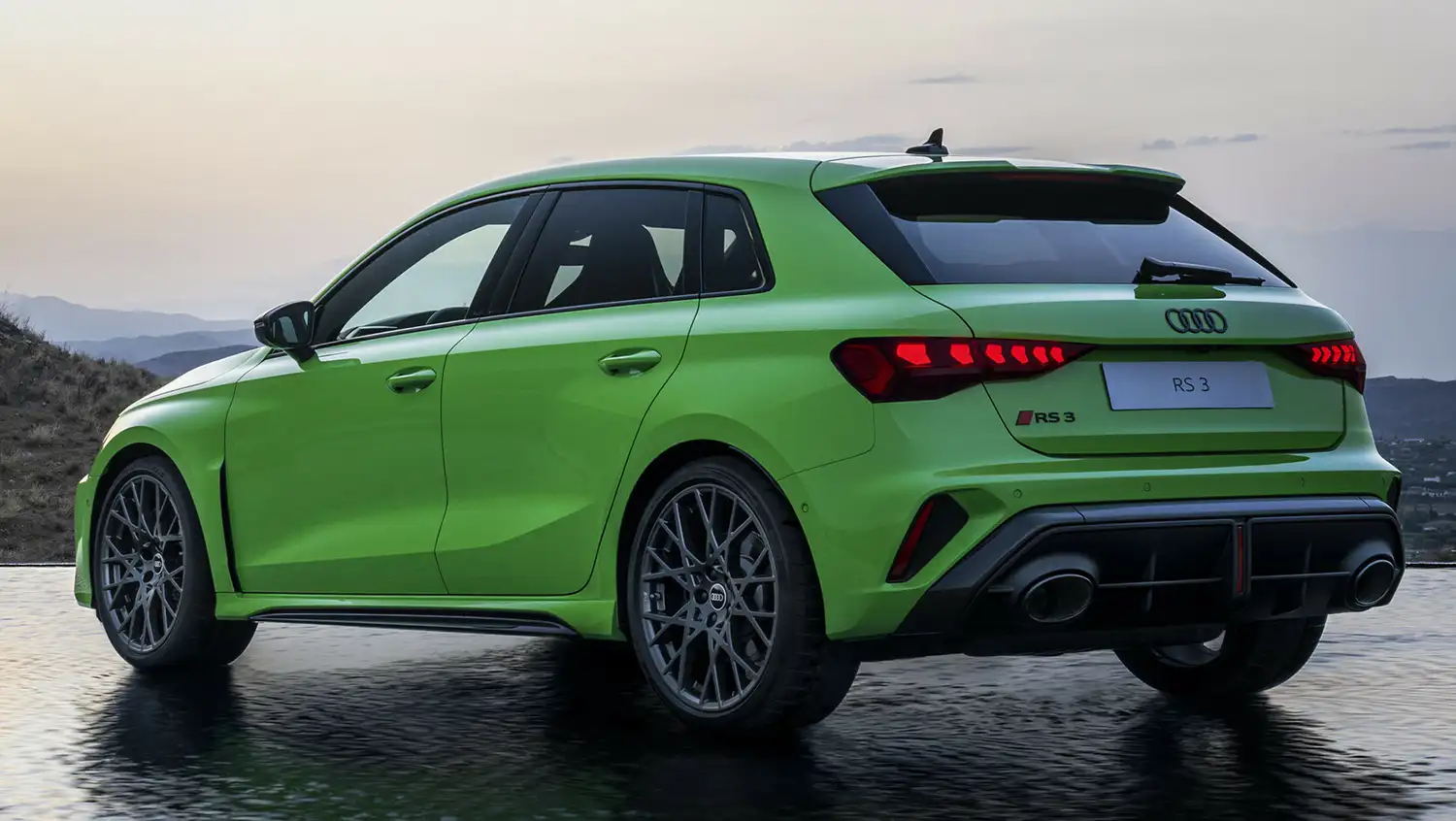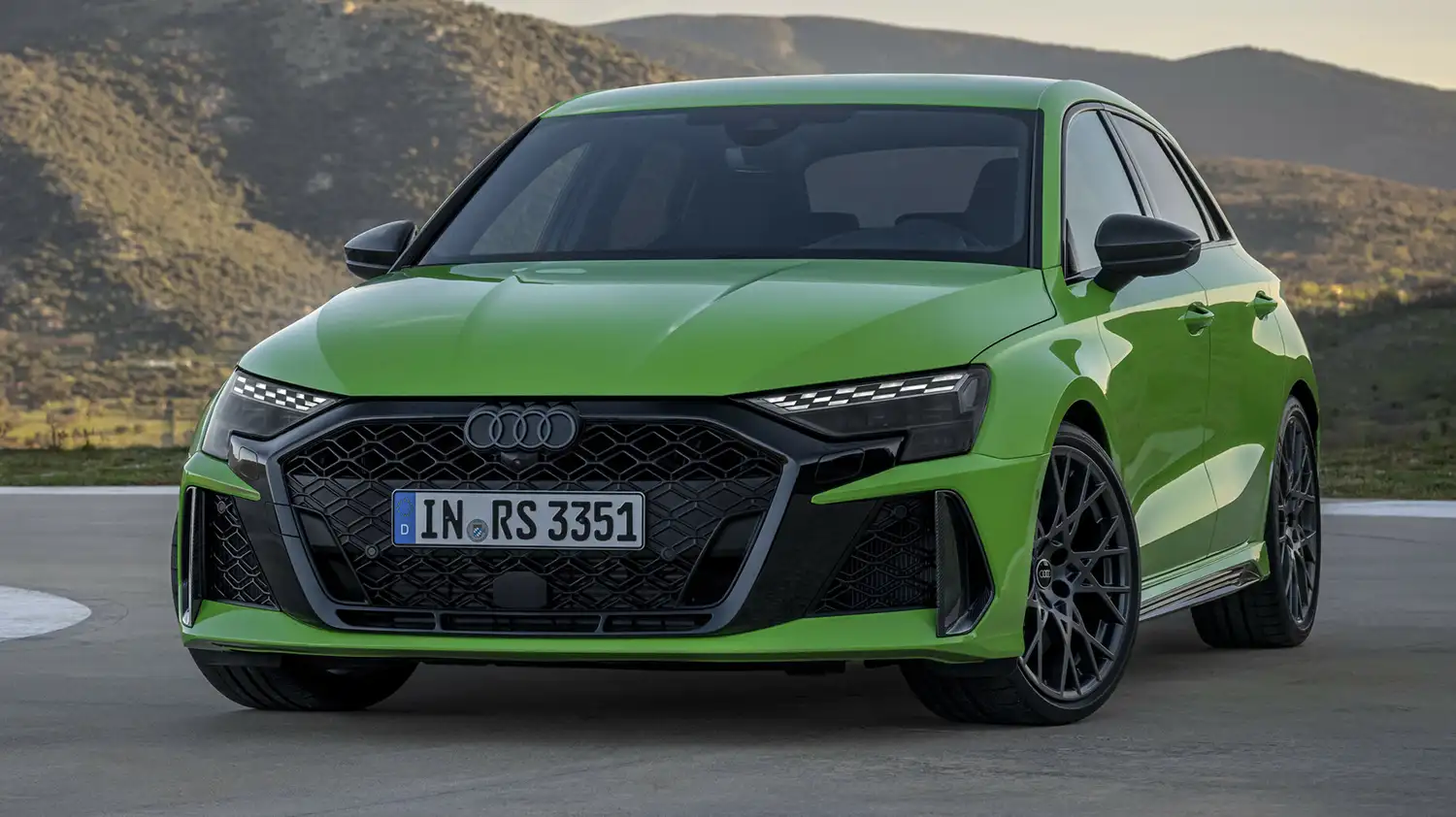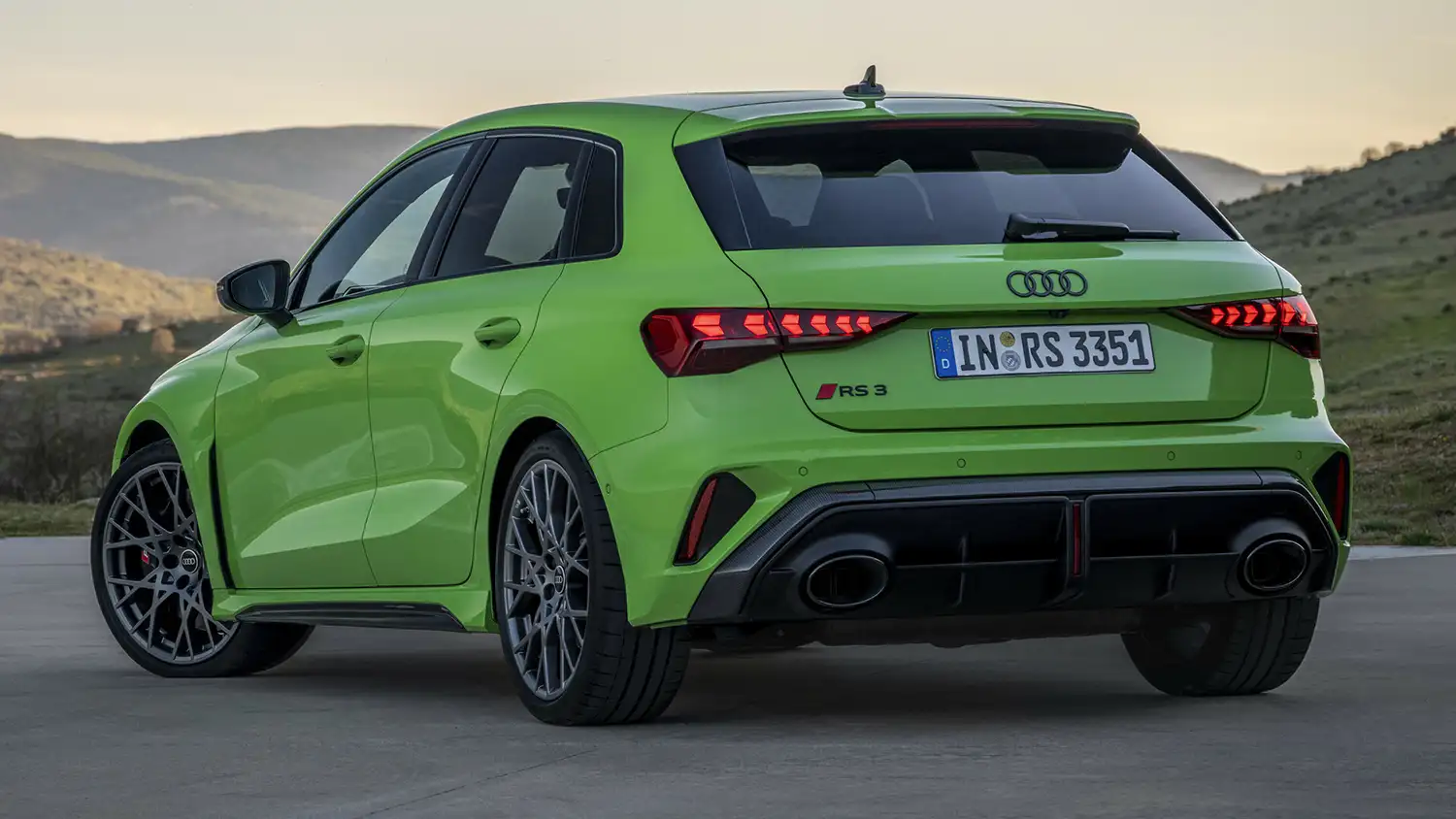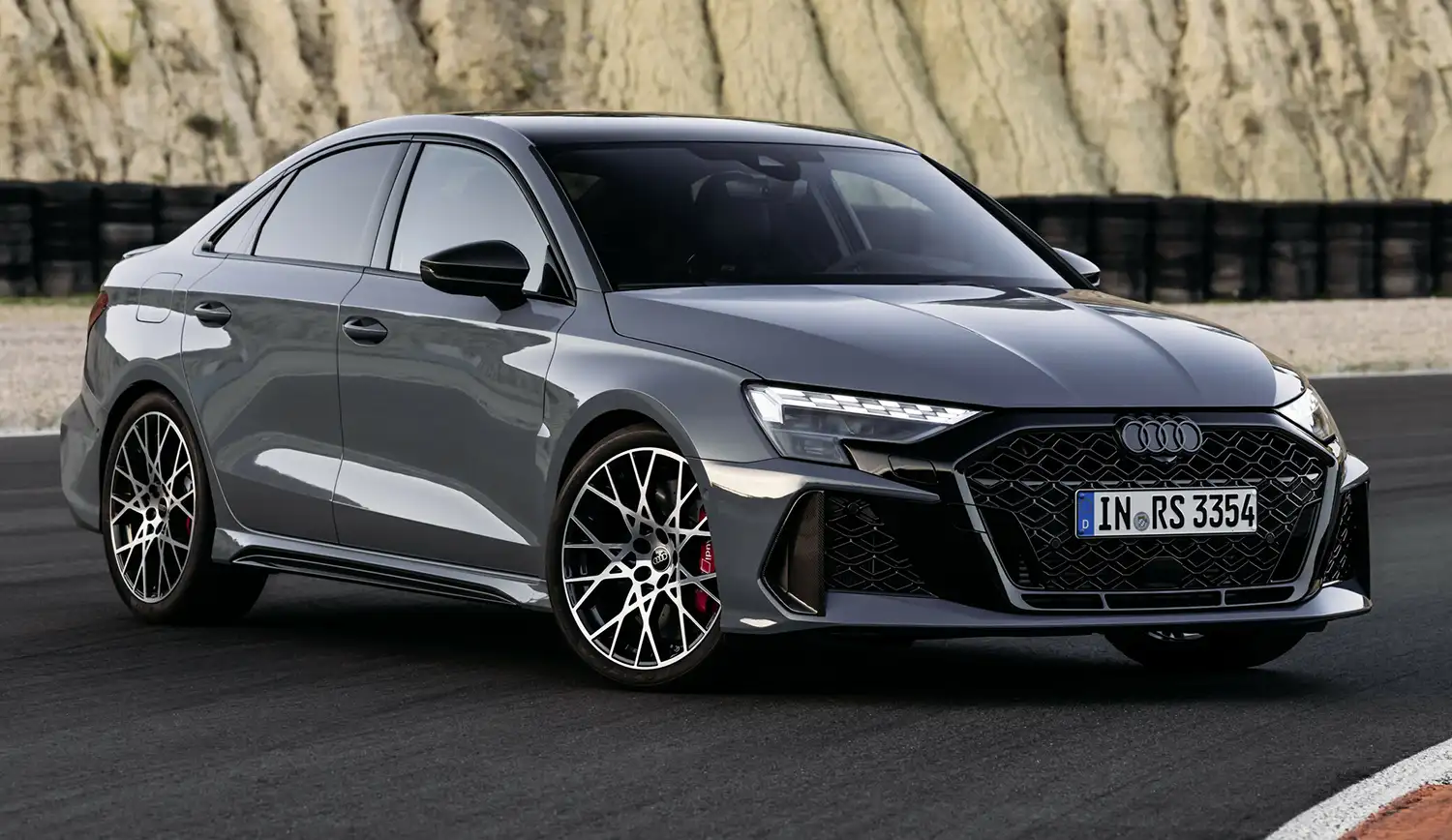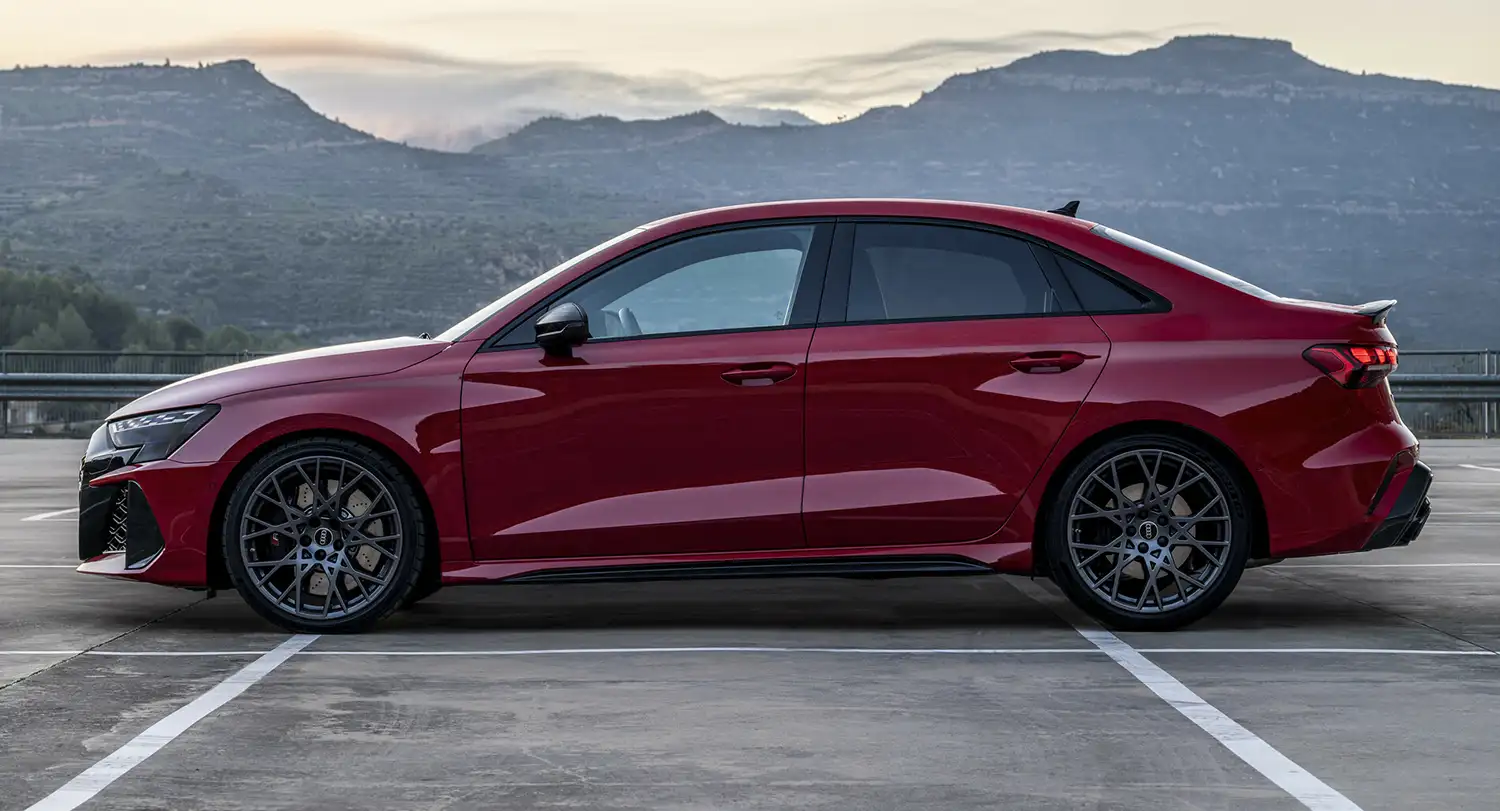
The Audi RS 3 has always been a symbol of raw power, precision, and driving pleasure, but with its latest generation, the RS 3 pushes the limits of performance even further. A benchmark for compact sports cars, it delivers exceptional cornering capabilities thanks to its optimized chassis setup. This mastery on curves has earned it the title of record holder at the Nürburgring-Nordschleife, where it clocked a jaw-dropping 7:33.123 minutes, cementing its place as a leader in the compact segment.
Emotion and Agility: The Evolution of the Audi RS 3
The Audi RS 3 is the most powerful model in its lineup, and with the latest updates, it has become even more dynamic and exhilarating to drive. Thanks to improved chassis configurations, the car offers unmatched agility, providing both racetrack-ready performance and everyday usability. Whether tackling hairpin turns or cruising on the highway, the RS 3 showcases its brilliance through precise handling and immense driving pleasure.

Torque Splitter: The Game Changer
In 2021, Audi introduced a revolutionary torque splitter in the RS 3, which dramatically enhanced the vehicle’s lateral dynamics. With fully variable torque distribution between the rear wheels, the RS 3 became more agile and responsive, allowing drivers to maintain speed and control through tight corners. This innovation, combined with the 2.5-liter five-cylinder turbocharged engine generating 400 horsepower and 500 Nm of torque, propelled the RS 3 to lap-record-breaking performance.
Three years later, with fine-tuning and further development, the current RS 3 outperforms its predecessor, shaving over seven seconds off its Nürburgring lap time. Marvin Schwätter, the RS 3’s Technical Project Manager, notes, “The torque splitter was a game changer, and with our continuous improvements, the RS 3 is now more agile and sharper in every bend.”

Precision in Every Curve
The enhanced performance of the RS 3 is felt in every corner, especially on twisty mountain roads and technical racetracks. In performance mode, the car feels like it’s glued to the road, avoiding understeer and precisely following the driver’s inputs. Through Audi’s advanced brake torque vectoring system, the rear wheel on the outside of a curve receives more power while the inner wheels are slightly braked, allowing for earlier acceleration out of bends. This seamless control helps the RS 3 glide through curves with more precision, ensuring faster exits and thrilling speed.
Technical Innovations at Play
Behind the scenes, an advanced algorithm coordinates the RS 3’s chassis control systems, including the torque splitter, electronic stabilization control, brake torque vectoring, and adaptive dampers. These systems work harmoniously depending on the selected Audi drive mode, adapting to varying driving conditions, from dry roads to wet or snowy surfaces. The result is a compact sports car that performs flawlessly under all conditions, offering drivers an experience that is both exhilarating and safe.
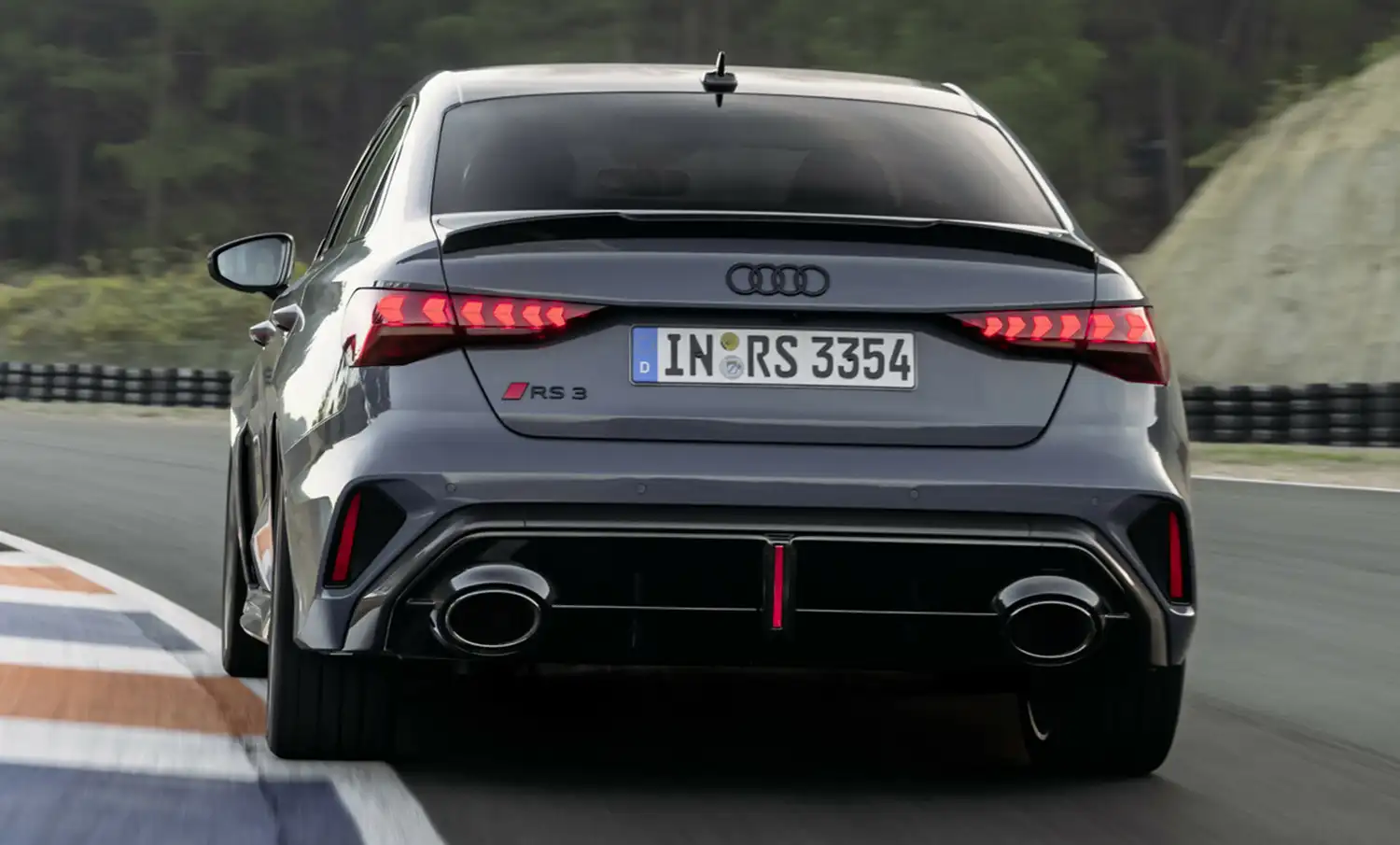
The Audi RS 3 continues to push the envelope of what a compact sports car can achieve, combining thrilling dynamics with cutting-edge technology, making every drive a performance masterpiece.
Source: Audi
This article was crafted with assistance from Chatgpt

